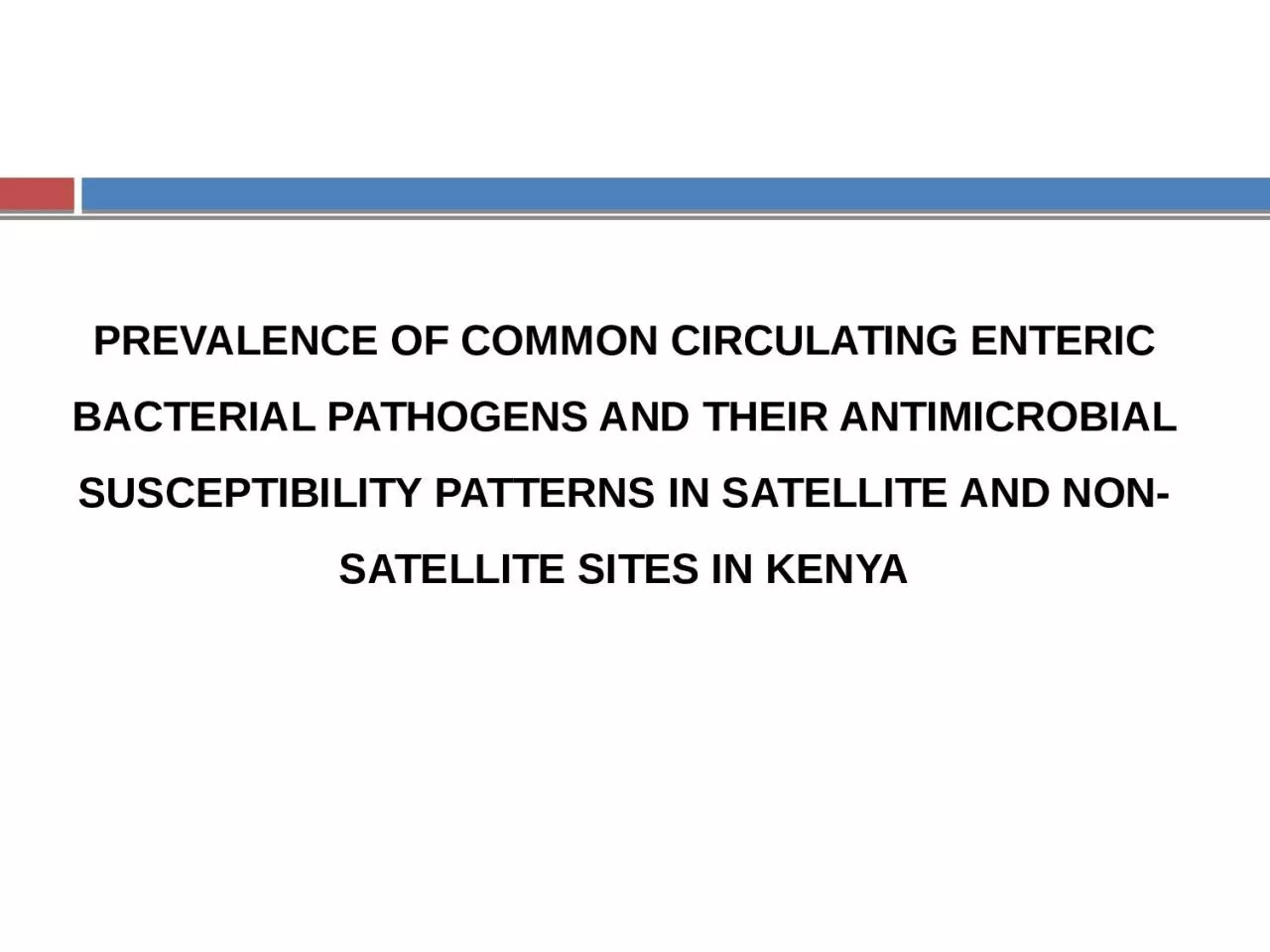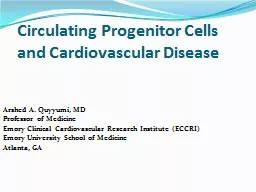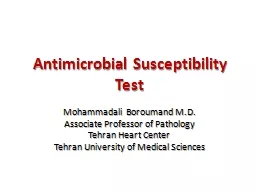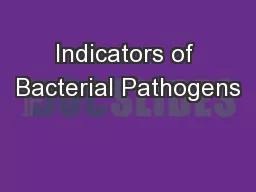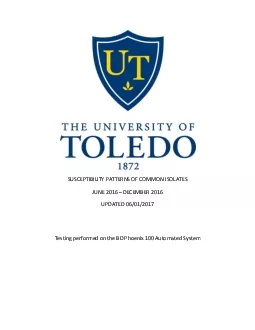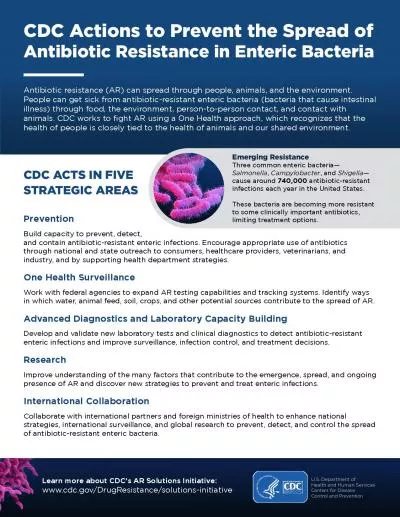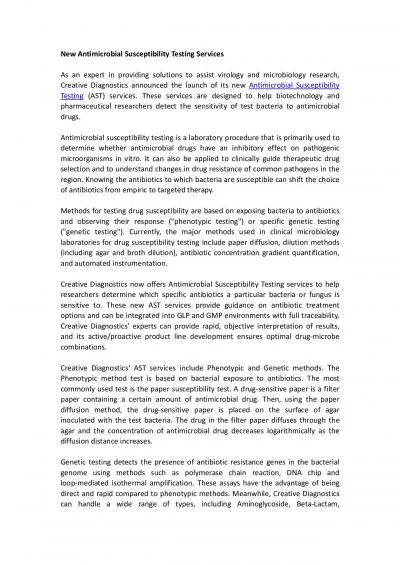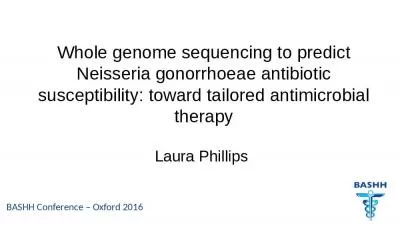PPT-PREVALENCE OF COMMON CIRCULATING ENTERIC BACTERIAL PATHOGENS AND THEIR ANTIMICROBIAL SUSCEPTIBILITY
Author : yvonne | Published Date : 2023-11-07
Study Design Hospital based crosssectional study of all children under five years of age Presenting with diarrheal illness seeking treatment Parents guardians
Presentation Embed Code
Download Presentation
Download Presentation The PPT/PDF document "PREVALENCE OF COMMON CIRCULATING ENTERIC..." is the property of its rightful owner. Permission is granted to download and print the materials on this website for personal, non-commercial use only, and to display it on your personal computer provided you do not modify the materials and that you retain all copyright notices contained in the materials. By downloading content from our website, you accept the terms of this agreement.
PREVALENCE OF COMMON CIRCULATING ENTERIC BACTERIAL PATHOGENS AND THEIR ANTIMICROBIAL SUSCEPTIBILITY: Transcript
Download Rules Of Document
"PREVALENCE OF COMMON CIRCULATING ENTERIC BACTERIAL PATHOGENS AND THEIR ANTIMICROBIAL SUSCEPTIBILITY"The content belongs to its owner. You may download and print it for personal use, without modification, and keep all copyright notices. By downloading, you agree to these terms.
Related Documents

